How to reduce food additives on your table without losing your mind
Taking the time to wander the grocery store aisles is tough enough. Just deciding what to make for dinner is its own headache, and when you bundle in worries about food additives like chemicals, preservatives, and colors and it’s enough to make you want to throw your hands in the air. What do the labels mean? Is there anything that’s really safe?

And the truth is, that’s hard to answer.
As you tiptoe in to the idea of eating food with fewer chemicals, that’s going to mean that you have to cook at home more, know how to decipher labels, and make choices that are the best for your family.
You have the power to control some of what food additives make it on to your plate–but there’s no way to cut it all.
Not unless you want to live a hermit’s life out on some abandoned land where you grow everything yourself. I don’t know about you, but that will never be my life.
- We have to (and like to) eat out sometimes.
- We have to buy certain ingredients at the store–even on this farm, I don’t grow every single item we eat.
- We have to follow a budget I simply can’t blow at Whole Foods (we don’t even have one close by, so there’s that.)
The two extremes of food additives in America: What if you don’t fit?
Is it just me or does it seem like there are two extremes when it comes to food additives and food production in the U.S.?
One side says everything is bad.
Your beef must come from cows whose poop smells like roses in spring, your vanilla beans have to come from Madagascar, and your tap water will never, ever be safe to drink. Just lock yourself in your house and wait till the chemicals kill you.
Then, there’s the toddler with Mountain Dew in his sippy cup, classrooms of school children downing Pop-Tarts when they need protein, and families whose nightly dinner comes from a paper bag and always gets super sized.
And for those of us who aren’t either of those things, where do we fit?
Here at Feast and Farm, you fit with me.
Here, it’s about making the small changes you can on the budget you have–that means we don’t always eat organic, that means having a Sprite instead of the Mountain Dew, or scraping off the neon blue frosting on cupcakes from the neighbor’s birthday party so we can have some cake too.
I’m not anti-gluten, anti-dairy or anti-sugar. I’m not counting calories or fat grams. But I am a a firm believer in being able to pronounce the ingredients on the label, and for moderation that supports a decently healthy, balanced life.
What drives me to a color-free, reduced food additive lifestyle
When my then 6 year old daughter stepped off the school bus, stumbling like she’d been hitting the sauce–I was shocked. Barely able to walk or make sentences, we eventually connected her problem to a school Halloween party where she’d eaten electric orange frosting-coated sugar cookies from the store.
We always knew that certain foods made her hyperactive or kept her up all night tossing and turning as a toddler. Yogurt smoothies were nearly the death of my nights until I read the label and thought it was the sugar keeping her awake at all hours, but it was probably the colors now that I know about her extreme sensitivity.
Removing colors and other food additives from her diet helped tremendously and now that she’s older it’s even easier to see when she’s had something she shouldn’t have.
But those early days got me thinking: If colors affect her like this, what else are we eating that could be affecting her, or all of us? How can I do better for my family?
And while I already loved to cook and bake from scratch, things went to a new level in my attempt to provide her with foods that were completely free from synthetic colors.
I became a label reader, and what I couldn’t buy, I learned to make myself–often finding that the homemade version wasn’t hard at all and tasted so much better than the pre-packaged stuff I was used to.
Food additive buzzwords to consider
Nothing I say on this blog is ever to scare or sway you in one direction or another (I’m a realist, not a vigilante) and finding reliable information about our food and what’s safe or isn’t safe is extremely hard. For that reason, I only want to offer information and let you decide how to best apply it to your own home.
Here are some food additives you may want to learn about and watch for on the labels of your favorite foods.
Potassium bromate
Found in flour for baked goods, it was used to help bread look more white and give structure and durability. Most U.S. flour brands are non-bromated now.
Brands to look for: Gold Medal, King Arthur, Bob’s Red Mill, Pillsbury, Pepperidge Farm
Sodium nitrates and nitrites
Preservatives used as a salt and to give meat its red appearance, some say these compounds aren’t all bad. They are in a lot of foods that may not be great for you though if eaten in excess like bacon, hot dogs, and processed lunch meat. Check the label to see if they are there–they are usually listed near the end. Choose a nitrate-free version if you want to avoid these.
Brands to look for: Hormel Natural Choice deli meats, Applegate, Trader Joe’s, Kroger Simple Truth and others–just read the label.
Aspartame
Artificial sweetener in a lot of “diet” items from soda, to yogurt and gum. Splenda, stevia and other sweeteners are on the market to, so just read the labels to see if your favorite products are using it.
Instead try: agave, honey, stevia, maple syrup
BHA and BHT
Preservatives used to prevent fat from spoiling and to preserve flavor and color, these two may not actually be as bad as some people think. Around since the 1940’s, they are found in drink mixes, shortening, fast food, cereals, gum and more. They are however chemical preservatives. If you want to skip them, check your favorite pre-packaged foods or ask your next fast food restaurant for a list of ingredients.
Titanium dioxide
Used in everything from cosmetics to sunscreen, this ingredient is used to make some foods appear whiter.
It’s found in items like yogurt covered raisins, coffee creamer, powdered donuts, even some brands of chocolate as a stabilizer. It’s not guaranteed to be a problem when eaten, but may trigger inflammation in the body. Read the package and skip it if you choose.
MSG
Made from glutamic acid and salt, MSG is notorious in the U.S. Some people say it causes everything from headaches to asthma but one thing is sure: it’s in a lot of food, and our bodies love its savory, meaty flavor known as umami. Found under lots of sneaky names like glutamic acid, hydrolyzed yeast extract, maltodextrin, hydrolyzed protein and many others, it’s found in canned soups, cold cuts, ranch dressing, salty snacks and just about any processed or pre-packaged food.
High fructose corn syrup
Maybe one of the most controversial, the FDA says they can’t find any data to support the fact that HFCS is any more dangerous than other sugars. You know as well as I do though that too much sugar isn’t good for any of us and provides little to no nutritional value. You’ll find it in soda, salad dressings, canned fruit, even bread. Maybe another reason to make more recipes at home.
Colors with numbers after them:
(Red #40 Yellow #6, etc.)
Thankfully these are easier to spot because synthetic colors must be listed on any food label. Research shows that some people will have hyperactivity and other reactions when exposed to synthetic colors and they are in places you’d never guess like salad dressings, some juice cocktails, yogurt and more.
9 Simple swaps you can make at the grocery today for fewer food additives in your cart
It’s hard to draw a line on what food additives to avoid and what to accept. I’ll have to leave part of that decision up to you. Here are 9 items you might have considered healthy but hold hidden ingredients it may be good to pass on:
- Kids yogurt smoothies–laden with sugar of course, most yogurts (and especially diet ones or low fat ones) will replace that fat with sugar or regular sugar with artificial sweeteners (aka chemicals). The kids version of these smoothies are typically colored and carry their own hefty dose of sugar. Instead, choose a Greek yogurt like Siggi’s or skyr that has very low sugar and high protein.
- Bottled salad dressing–Thickeners, flavor enhancers and colors are just part of what you’ll find in most bottled dressings. If you’re looking at something like honey mustard for your chicken, you’ll also find yellow food coloring. Check your favorite brand for more details, but making your own may be your best bet.
- Chips with any orange “cheese”on them–Neon orange fingers feel like a lot of fun to lick, but any”cheese” flavored chip on the shelves is likely made with synthetic colors and flavors. We buy Aldi’s nacho cheese chips and they are free from synthetic colors but I will admit they don’t taste that much like the real ones. It’s better to choose a plain old salted variety.
- Margarine or tub “butter”--These tubs are often hydrogenated oils blended with flavors and stabilizers. I’m always a supporter of real butter, olive oil, avocado oil or coconut oil over these items.
- Chicken broth or bouillon–Notorious for hiding MSG in them, most bouillons will label it as “yeast extract” or a spectrum of other names. If you are MSG sensitive, make sure to read the label. Many are made with a base of mushrooms or carrots and contain very little chicken or beef at all– you’ll be better off taking a few hours to make some homemade stock and freezing it for later rather than buying it from the store.
- Microwave popcorn--How much time do you have for this one? A spectrum of chemicals inside the bags and flavorings on the corn itself permeate the food as it heats–some of which have been linked to cancer, and diacetyl which triggers breathing diseases. I know it’s convenient, but 10 minutes with a pot or popcorn popper and you can make your own without all that other stuff.
- Powdered ranch dressing mix–Also hiding MSG, that powdered mix we love to use for chips and dip isn’t so great for you. I have a homemade version that’s a great swap.
- Meat and cheese kids lunch packs--Sure they’re easy to grab but aside from the fat and salt, there’s plenty of nitrates to go around and colors to boot. You can read more about how some of them ranked with kids and adults here.
- Food coloring (obviously)–This is just out for us, and very few stores sell any natural versions. (affiliate link) I purchased a set of natural ones from Amazon that have worked well for those times when a birthday cake needs some color, or you could even use fruit purees to tint frosting.
When should you spend for organic?
It’s a huge question and one that I think is fairly easy to answer. A lot of people say that our pesticide use in this country is closely regulated and safe–but independent researchers do find pesticide residue on our produce. So while it is there in some amount, it doesn’t mean you need to buy all organic.
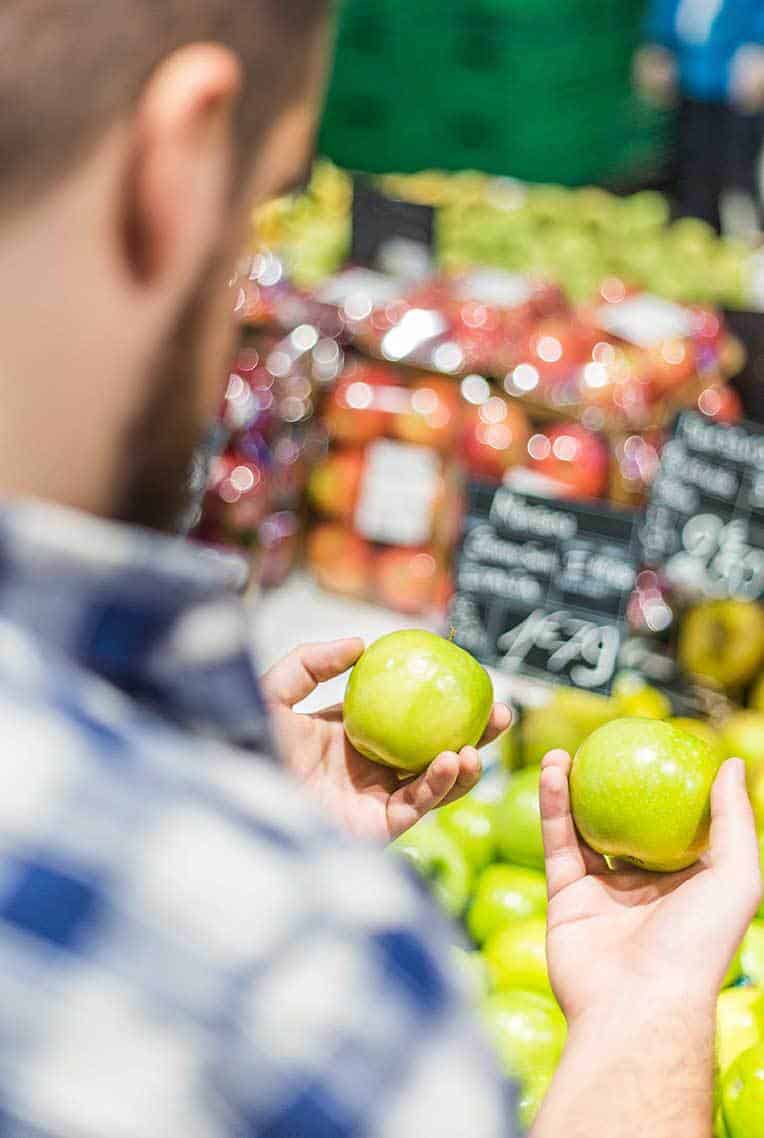
Basically, if you can peel it, you can skip the organic version. While it won’t remove all the pesticides, it does help reduce them.
Some produce that does not need to be organic includes:
- bananas
- kiwi
- pineapple
- watermelon
- canteloupe
- grapefruit
- avocado
- onions
- mangoes
It may make sense to buy these items in the organic version:
- apples
- strawberries
- celery
- peaches
- grapes
- tomatoes
- bell peppers
- cherries
- fresh spinach
Researchers also say that frozen and canned versions of your favorite fruits and vegetables tend to have less pesticide residue (plus they’re cheaper) so don’t hesitate to buy these versions.
Take small steps and do what you can to reduce your food additives. Keep it real y’all.
I can’t stress enough that how you choose to reduce food additives in your diet is a personal choice and one that none of us gets perfect all the time. Look for ways to make those small changes–they all add up in the end.
Leave me a comment and tell me how you plan to reduce food additives in your own home. I can’t wait to talk with you more about this!
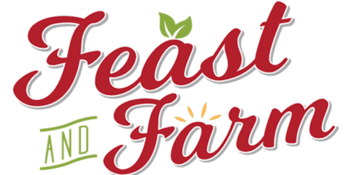


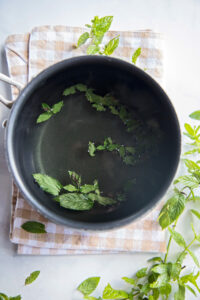
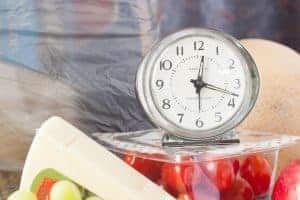
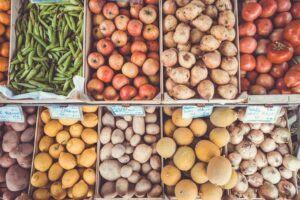
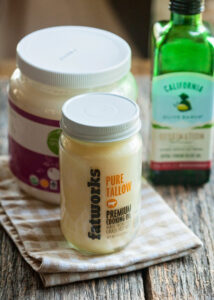
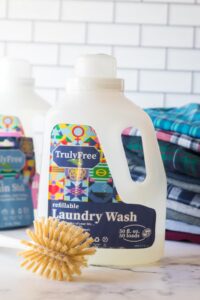

Loved the above article, I too sit in the middle,I try my best but sometimes it’s impossible. I’m in Australia.
Thank you Rob!
I have found your website, Facebook page and recipes to be just what I needed. I knew we needed to do better and started on a journey of eating better in our home. It became overwhelming and almost scary. Going to the grocery store was daunting because nothing seemed “good” enough. Then I heard you speaking on a podcast and thought YES!!! Thank you!
Brandi let me welcome you! I created this site to help you navigate those struggles and I hope you will be able to see that. Please reach out anytime you have a challenge and make sure you join my email list too. I give out lots of great information there. Here’s to your journey to better eating, one step at a time. –Rachel
I’ll start to read more labels !!!! What about all the milk choices? You can go crossed eyed at the milk freezer? Can you recommend a easy cook book ?
So milk is a dicey topic for a lot of people, and what I like to say is that each of us can choose to make the decision that’s right for us and our wallets. I don’t see much wrong with conventional milk–yes those cows have likely had an antibiotic at some point in their life but the farmers have to follow proper withdrawal times before their milk can be sold for use by the public. That animal may have been fed a genetically modified feed, or been exposed to pesticides…does that bother you? That’s a question only you can answer. If yes, then buy organic milk if your wallet allows or get local raw milk if you can. If no, stick with conventional.
My goal with this blog isn’t to instill fear in others based on my personal beliefs, but to help provide facts that help you make a decision that’s right for you and your food journey. I always say that I’d rather you choose that milk over a Mountain Dew–there’s always something worse you could be eating or drinking so if you choose regular milk instead of a sugar-laden synthetic soda I’m all for every little change you choose. –Rachel